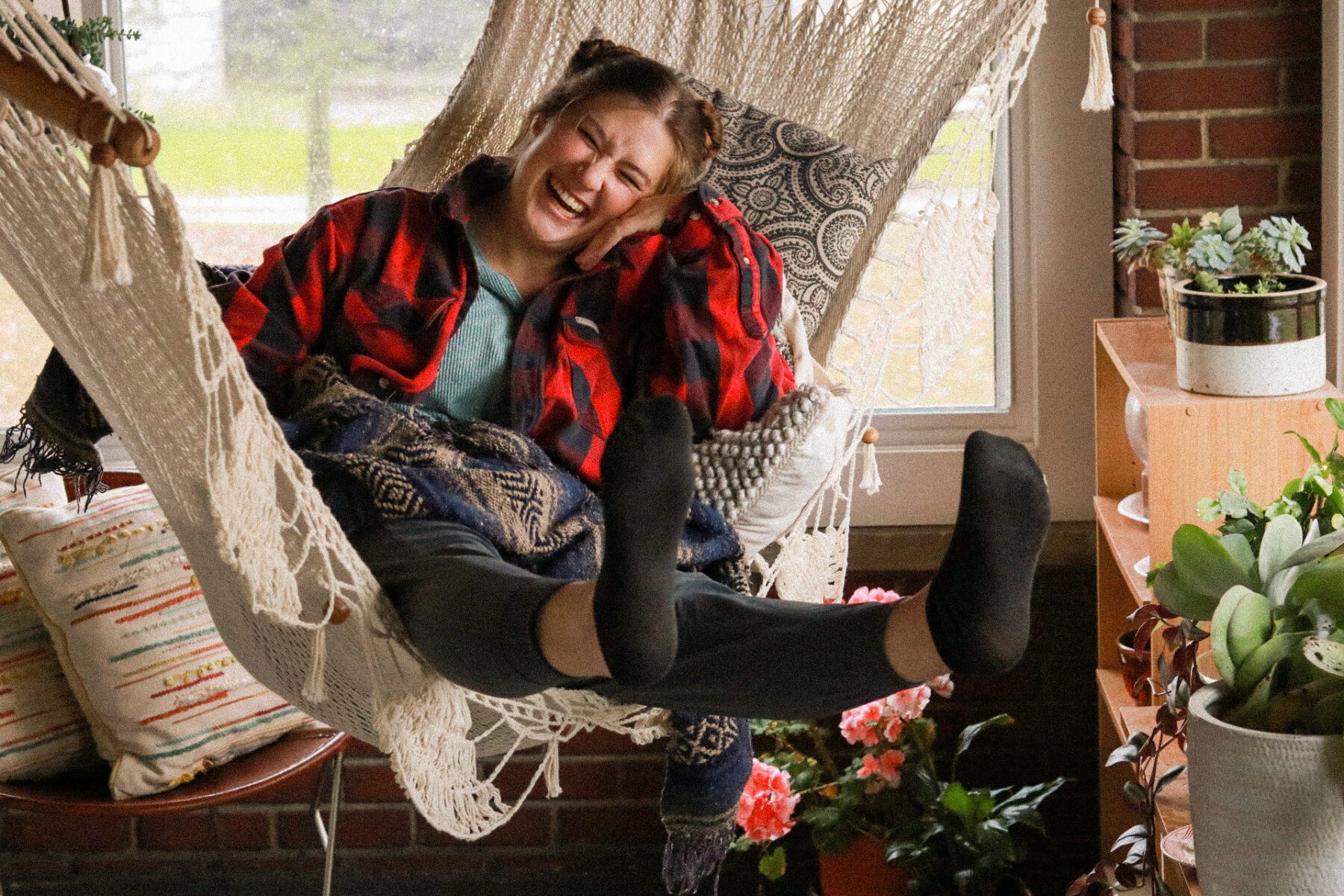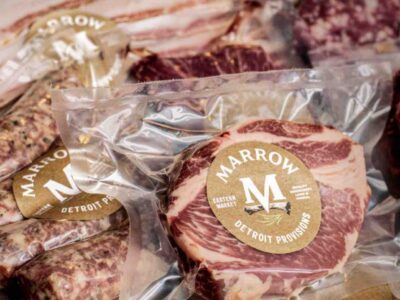In an effort to clothe and be clothed, we make a lot of fabric. In fact, the EPA estimated that the generation of textiles in 2018 was 17 million tons, and yet just under 15% of all textiles were recycled that same year. That leaves around 14.5 million tons of fabric sitting in thrift shops or landfills.
That’s a lot of fabric.
The good news is that there are individuals and businesses out there committed to reducing textile waste to reuse or repurpose material back into practical purposes, and we can partner together with them to make a difference.
The Copper Fox Makery
One entrepreneur in Ohio has picked up the art of crocheting to cut back on fabric waste. Rachael Martin learned how to crochet from her grandmother when she was seven years old.
“I was raised to use everything and not waste anything,” said Rachael. It wasn’t until high school, through a chance connection in her neighborhood, that she learned how to make rag rugs.
“Our family had a big yellow lab that ran off,” Rachael shared. “A lady found him a few roads over. We connected, and I learned that she crocheted rag rugs. She lived by herself, so our family would go for walks to visit her. She taught me how to crochet the rugs.” The neighbor made her rugs from recycled fabric, hunting around in thrift stores for sheets and such, without any concern for colors.
After Rachael got married in 2018, she began experimenting with Etsy to see if she could sell any of her handmade things. She started her shop in March 2019 and sold her first rug in June.
“My aunt bought my first rug,” Rachael said, laughing.
When she first started making the rugs, she tore the cotton fabric by hand because it tears in a straight line, but it’s a time consuming and limiting process. Soon, she invested in an electric rotary cutter to make preparing the fabric easier and open up options for types of fabric she could use, anything from denim to corduroy, from knits to t-shirts. The only caveat is that the fabric has to be long enough to use.
“A 2’x3’ rug can take three twin to queen size sheets to complete,” said Rachael.
Besides finding lots of fabric at area thrift stores, where she sources sheets, tablecloths, clothes, and even someone else’s leftover fabric from the end of their projects, Rachael also makes memorial pieces.
“Someone will give me fabric from a person who has passed away,” Rachael said. She’s made blanket baskets and memorial pillows, among other things, using these fabrics.
“Everything I make is one-of-a-kind,” said Rachael. She keeps fabric of various shapes and sizes in her “rug room” at her home and can take specific size and color orders. Rachael has made everything, from very small pieces to a 6’x9’ rug.
Using leftover fabrics and repurposing thrifted sheets and clothes takes these items from someone’s once treasured home and redirects them, from the trash to someone’s new treasure… with a story.
“I’ve had so many people come up to me and say, ‘My grandma used to make it this way,’” said Rachael. “I also go to estate sales and auctions where there’s been a 100-year-old quilter. If I’m able to get some of the fabric from that person, I want to know the stories that go with those pieces.”
“It’s a lost art of being grateful for everything and seeing value in everything,” Rachael said. “The scrappy rugs are the leftovers of the leftovers of the leftovers. I’ll make a custom order – if I have three or four straps left that get put into scrappy rug. I don’t throw it away until it’s gone. It comes from a generational art of sustainability, tied to gratefulness and being a good steward of what you’re given.”
The rugs, blanket baskets, and more that Rachael makes take a lot of time and energy, but they’re practical, purposeful things with value for the hard work and material that goes into them.
“My pieces are intended to last and be passed on to the next generation,” said Rachael. “I make a home product. Opening your home to people is super important to me.” Making products for people’s homes gives them a tool for hospitality and being a good steward of that home.
Rachael takes special orders and maintains an online store for her items. Browse all of Rachael’s products on her website, thecopperfoxmakery.com, and follow her on Instagram (@thecopperfoxmakery).
Thread Up Oxford
Sometimes an intervention is needed before Rachael is able to track down her fabrics from local thrift stores. That’s where Thread Up Oxford comes in.
Thread Up Oxford is dedicated to changing the way the local and regionally Oxford community views and uses textiles. They aim to bring awareness to our culture’s cycle of “fast fashion,” the habit of buying massive amounts of clothing that aren’t durable and become obsolete not long after they’ve been purchased.
Shana Rosenberg is the founder of Thread Up Oxford. She writes on their website, “I started Thread Up Oxford because I believe that reducing textile waste can be addressed successfully on a local community scale. Through outreach, education, and programming, we can teach the community how to consume fewer new textiles and (instead) increase reuse and recycling of second hand ones. We can all take small steps and have a giant impact!”
Thread Up Oxford collects donated clothing and redistributes it to those with financial hardships. They host free shopping events in lower income neighborhoods. Other textiles, such as sheets, blankets, towels, craft fabrics, and so on, are donated to local social services, food pantries, crafters, pet shelters, and other area organizations to be reused or upcycled the way Rachael incorporates used fabric into her projects.
Emilie Davis, Impact Officer for Thread Up Oxford, writes on their website, “I believe in the importance of reuse and recycling if we intend to manage the climate crisis facing us now and in future generations. I got involved with Thread Up Oxford to learn more about how we can keep textiles out of landfills. The more I learn, the more I see that each of us can make a meaningful difference by coordinating our efforts. I’m excited to help with that in some small way.”
Connect with Thread Up Oxford by visiting their website threadupoxford.org, or follow them on Facebook or Instagram.





 Copyright
2024
Root and Vine
Copyright
2024
Root and Vine